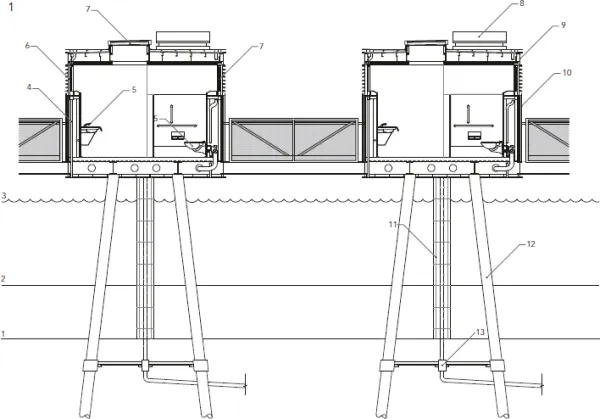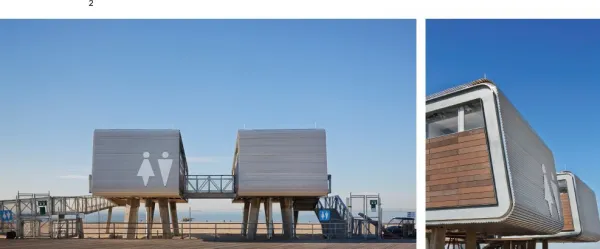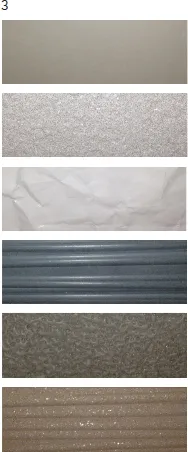
eBook - ePub
Integrating Innovation in Architecture
Design, Methods and Technology for Progressive Practice and Research
- English
- ePUB (mobile friendly)
- Available on iOS & Android
eBook - ePub
Integrating Innovation in Architecture
Design, Methods and Technology for Progressive Practice and Research
About this book
Today's design professionals are faced with challenges on all fronts. They need not only to keep in step with rapid technological changes and the current revolution in design and construction processes, but to lead the industry. This means actively seeking to innovate through design research, raising the bar in building performance and adopting advanced technologies in their practice. In a constant drive to improve design processes and services, how is it possible to implement innovations? And, moreover, to assimilate them in such a way that design, methods and technologies remain fully integrated?
Focusing on innovations in architecture, this book covers new materials and design methods, advances in computational design practices, innovations in building technologies and construction techniques, and the integration of research with design. Moreover, it discusses strategies for integrating innovation into design practices, risks and economic impacts. Through numerous case studies, it illustrates how innovations have been implemented on actual architectural projects, and how design and technical innovations are used to improve building performance, as well as design practices in cutting-edge architectural and engineering firms.
Projects of all scales and building types are discussed in the book, ranging from small-scale installations, academic and commercial buildings to large-scale mixed-use, healthcare, civic, academic, scientific research and sports facilities. Work from design firms around the globe and of various scales is discussed in the book, including for example Asymptote Architecture, cepezed, CO Architects, Consarc Architects, FAAB Architektura, Gerber Architekten, HOK, IDOM-ACXT, MAD Architects, Morphosis Architects, SDA | Synthesis Design + Architecture, Studiotrope, Perkins+Will, Richter Dahl Rocha & Associés, Snøhetta, Rob Ley Studio, Trahan Architects, UNStudio and Zaha Hadid Architects, among many others.
Focusing on innovations in architecture, this book covers new materials and design methods, advances in computational design practices, innovations in building technologies and construction techniques, and the integration of research with design. Moreover, it discusses strategies for integrating innovation into design practices, risks and economic impacts. Through numerous case studies, it illustrates how innovations have been implemented on actual architectural projects, and how design and technical innovations are used to improve building performance, as well as design practices in cutting-edge architectural and engineering firms.
Projects of all scales and building types are discussed in the book, ranging from small-scale installations, academic and commercial buildings to large-scale mixed-use, healthcare, civic, academic, scientific research and sports facilities. Work from design firms around the globe and of various scales is discussed in the book, including for example Asymptote Architecture, cepezed, CO Architects, Consarc Architects, FAAB Architektura, Gerber Architekten, HOK, IDOM-ACXT, MAD Architects, Morphosis Architects, SDA | Synthesis Design + Architecture, Studiotrope, Perkins+Will, Richter Dahl Rocha & Associés, Snøhetta, Rob Ley Studio, Trahan Architects, UNStudio and Zaha Hadid Architects, among many others.
Frequently asked questions
Yes, you can cancel anytime from the Subscription tab in your account settings on the Perlego website. Your subscription will stay active until the end of your current billing period. Learn how to cancel your subscription.
No, books cannot be downloaded as external files, such as PDFs, for use outside of Perlego. However, you can download books within the Perlego app for offline reading on mobile or tablet. Learn more here.
Perlego offers two plans: Essential and Complete
- Essential is ideal for learners and professionals who enjoy exploring a wide range of subjects. Access the Essential Library with 800,000+ trusted titles and best-sellers across business, personal growth, and the humanities. Includes unlimited reading time and Standard Read Aloud voice.
- Complete: Perfect for advanced learners and researchers needing full, unrestricted access. Unlock 1.4M+ books across hundreds of subjects, including academic and specialized titles. The Complete Plan also includes advanced features like Premium Read Aloud and Research Assistant.
We are an online textbook subscription service, where you can get access to an entire online library for less than the price of a single book per month. With over 1 million books across 1000+ topics, we’ve got you covered! Learn more here.
Look out for the read-aloud symbol on your next book to see if you can listen to it. The read-aloud tool reads text aloud for you, highlighting the text as it is being read. You can pause it, speed it up and slow it down. Learn more here.
Yes! You can use the Perlego app on both iOS or Android devices to read anytime, anywhere — even offline. Perfect for commutes or when you’re on the go.
Please note we cannot support devices running on iOS 13 and Android 7 or earlier. Learn more about using the app.
Please note we cannot support devices running on iOS 13 and Android 7 or earlier. Learn more about using the app.
Yes, you can access Integrating Innovation in Architecture by Ajla Aksamija in PDF and/or ePUB format, as well as other popular books in Architecture & Architecture Methods & Materials. We have over one million books available in our catalogue for you to explore.
Information

1 INNOVATIVE MATERIALS
Innovations in materials are influencing contemporary architectural practice. Today, the focus is primarily on new materials that exhibit enhanced properties. Therefore, advanced and composite materials, smart and responsive materials, and biologically inspired materials are gaining popularity in architectural design. Advanced materials are those that have enhanced properties (such as thermal performance, structural properties, durability and so on), and exhibit sensitivity to the environment in terms of production and use. Smart and responsive materials are those that exhibit properties that can be changed or altered, so that they act as sensors or actuators, responding to changes in the environment. These new emerging materials offer radical changes to the built environment in terms of energy usage, thermal behaviour, structural performance and aesthetics. This chapter provides an overview of emerging materials and discusses their use, performance, benefits and drawbacks.
Advances in physical sciences have led to a new understanding of changeable materials, particularly those compromising the acoustic, luminous and thermal environments of buildings. A smart structure can be defined as a non-biological physical structure that has a definite purpose, means and imperative to achieve that purpose, and a biological pattern of functioning. Smart materials are considered to be a subset, or components of smart structures, and act in such a way as to mimic the functioning of a biological or living organism and adapt to changing conditions in the environment. Smart materials can be classified into two general categories – materials that can sense and inherently respond to the changes in the environment, and materials that need control in a systematic manner in order to actuate based on a certain change. Different types of smart materials include piezoelectric, electrochromic, electrostrictive, magnetostrictive, electrorheological, shape-memory alloys and fibre-optic sensors. Piezoelectric materials exhibit significant material deformation in response to an applied electric field and produce dielectric polarisation in response to mechanical strains. Electrostrictive materials exhibit mechanical deformation when an electric field is applied. Magnetostrictive materials generate strains in response to an applied magnetic field. Electrorheological materials exhibit the ‘ER response’ or ‘Winslow effect’, which refers to a significant and reversible change in the rheological behaviour of fluids subjected to an external applied electric field – low viscosity fluid converts into a solid substance. Shape-memory alloys are metal compounds that can sustain and recover large strains without undergoing plastic deformation under externally applied stress or thermal changes.

1 Garrison Architects, New York City Beach Restoration Modules, New York, USA, 2013.
The section shows building elements and systems. The modules are raised on concrete legs to withstand significant sea level rise.
- Sand
- Boardwalk
- Advisory base flood elevation
- Building envelope
- Low flow plumbing fixtures
- Operable windows
- Skylights
- Photovoltaics
- Galvanised steel frame
- Fibre-reinforced concrete cladding
- Pre-stressed concrete pilings
- Utility chase
- Piping connectors
ADVANCES IN CONCRETE
Transforming the design and construction industries are new advances in concrete- and cement-based products. Among many new materials being used are superplasticising admixtures, high-strength mortars, self-compacting concrete and high-volume fly ash and slag concretes. A number of advances in new concrete technologies have been made in the past decade, including materials, recycling, mixture proportioning, durability and environmental quality. There are also diverse new methods and techniques in today’s construction world, such as high-performance concrete (HPC) and fibre-reinforced concrete (FRC). Advanced composite materials have become popular in the construction industry for innovative building design solutions, including the strengthening and retrofitting of existing structures. The interface between different materials is a key issue of such design solutions, as the structural integrity relies on the bond between different materials. Knowledge about the durability of concrete/epoxy interfaces is becoming essential, as the use of these systems in applications such as fibre-reinforced plastic (FRP) strengthening and retrofitting of concrete structures is becoming increasingly popular.

2 (opposite below and below) Garrison Architects, New York City Beach Restoration Modules, New York, USA, 2013.
The beach modules incorporate GFRC panels as facade cladding materials.
Recycled materials are usually added to HPC, thereby reducing the need to dispose of them.1 Some of the materials include fly ash (waste by-product from coal burning), ground-granulated blast-furnace slag and silica fume. But perhaps the biggest benefit of some of these other materials is the reduction in the need to use cement, also commonly referred to as Portland cement. The reduction in the production and use of cement has many beneficial aspects, including a decrease in the creation of carbon-dioxide emissions and energy consumption. In addition, fly ash and furnace slag have properties that improve the quality of the final concrete and the use of them is usually more cost-effective than cement.

3 Surface, colour and finishing textures of GFRC concrete.
A variety of finishing techniques and colours are possible for GFRC concrete facade cladding, so facades can have interesting, dynamic patterns.
Today’s concrete technologies have produced new types of concrete that have lifespans measured in the hundreds of years rather than decades. When compared with standard concrete, new concretes have better corrosion resistance, equal or higher compressive and tensile strengths, higher fire resistance, and rapid curing and strength gain. In addition, the production and life ...
Table of contents
- Cover
- Copyright
- Title Page
- Acknowledgements
- Foreword: by Phil Harrison
- Introduction: Innovation in Architecture (What, Why and How)
- 1 Innovative Materials
- 2 Innovations in Computational Design
- 3 Technological Innovations
- 4 Innovations in The Design Process and Architectural Practice
- 5 Building Integrated Innovations and Methods (Case Studies)
- Future Outlooks: Concluding Remarks
- Select Bibliography
- Appendix: Case Studies Index
- Index
- Eula